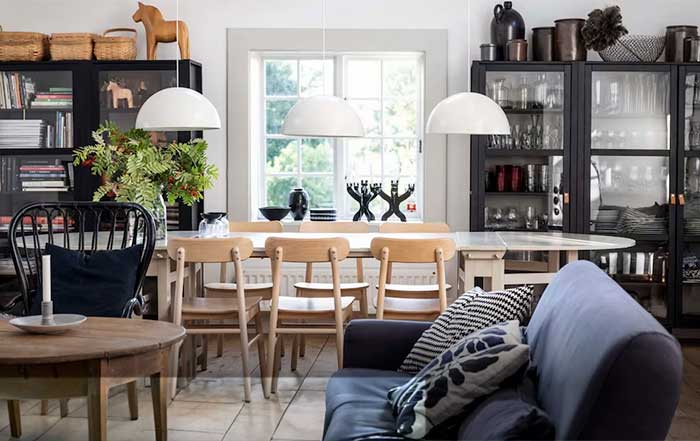Due to people fleeing to different cities because of the coronavirus lockdowns, unemployed millennials returning to live with their parents, and bored-induced renovation, many people have been selling their furniture at affordable costs. The growing acceptance of old furniture encourages sustainability, lessens the need for raw materials, and minimizes carbon footprint. Businesses like IKEA are putting new strategies into practice, which will help them gain ground in the second-hand furniture industry.
According to Straits Research, “The global off-the-shelf second-hand furniture market growth was valued at USD 29.80 billion in 2021. It is projected to reach USD 58.58 billion by 2030, growing at a CAGR of 7.80% during the forecast period (2022-2030).” Steelcase, a furniture manufacturer and designer, is implementing a circular economy business model and trying to increase the amount of easily disassembled and recyclable furniture. In addition, setting timelines for implementing environmentally friendly practices is becoming more common among corporations, local governments, and well-established organizations. For instance, IKEA introduced a new "Buy Back" initiative in November 2020 in a few EU countries to encourage customers to sell back their used IKEA furniture. IKEA will then sell the furniture for regular pricing. The business has pledged to employ exclusively recyclable, sustainable, or reusable materials to achieve full circularity by 2030.
Growing C2C and B2C Online Stores Creates Tremendous Opportunities
The primary factors boosting the furniture market are the global construction boom and increased residential and commercial infrastructure investments. The number of restaurants, resorts, hotels, and shopping malls will rise in industrialized nations as wealth and disposable income levels rise. New technology, design, and materials push producers to innovate more quickly, which benefits merchants of luxury and cutting-edge furniture as well. The increased use of mobile devices worldwide has contributed to the growth of e-commerce. Thanks to mobile devices, people are transacting more passively and flexibly online. Additionally, payment systems are being changed by fintech companies, making them secure and simple to use. These factors are anticipated to create tremendous opportunities for the global off-the-shelf second-hand furniture market over the forecast period.
Regional Analysis
North American off-shelf second-hand furniture industry share is expected to grow at a CAGR of 5.30% during the forecast period. It is projected that the market in North America will expand as second-hand furniture becomes more readily accessible through online shops like eBay and Amazon. In the US, used furniture sales are anticipated to increase. The market for North American off-the-shelf used furniture is growing significantly due to the greater accessibility of used furniture through online and offline channels. Consumers are embracing a variety of furniture styles that can satisfy their needs.
Europe is expected to grow at a CAGR of 4.95%, during the forecast period. The two countries that contribute the most to the European market for second-hand off-the-shelf furniture are Germany and the United Kingdom. The market for off-the-shelf used furniture in Europe is expected to rise during the estimated period due to the rising need to maximize return on investment and the increasing importance of charity shops as a significant offline shopping destination for second-hand furniture products. The sector is also increasing due to clients' rising need to reduce costs across Europe.

